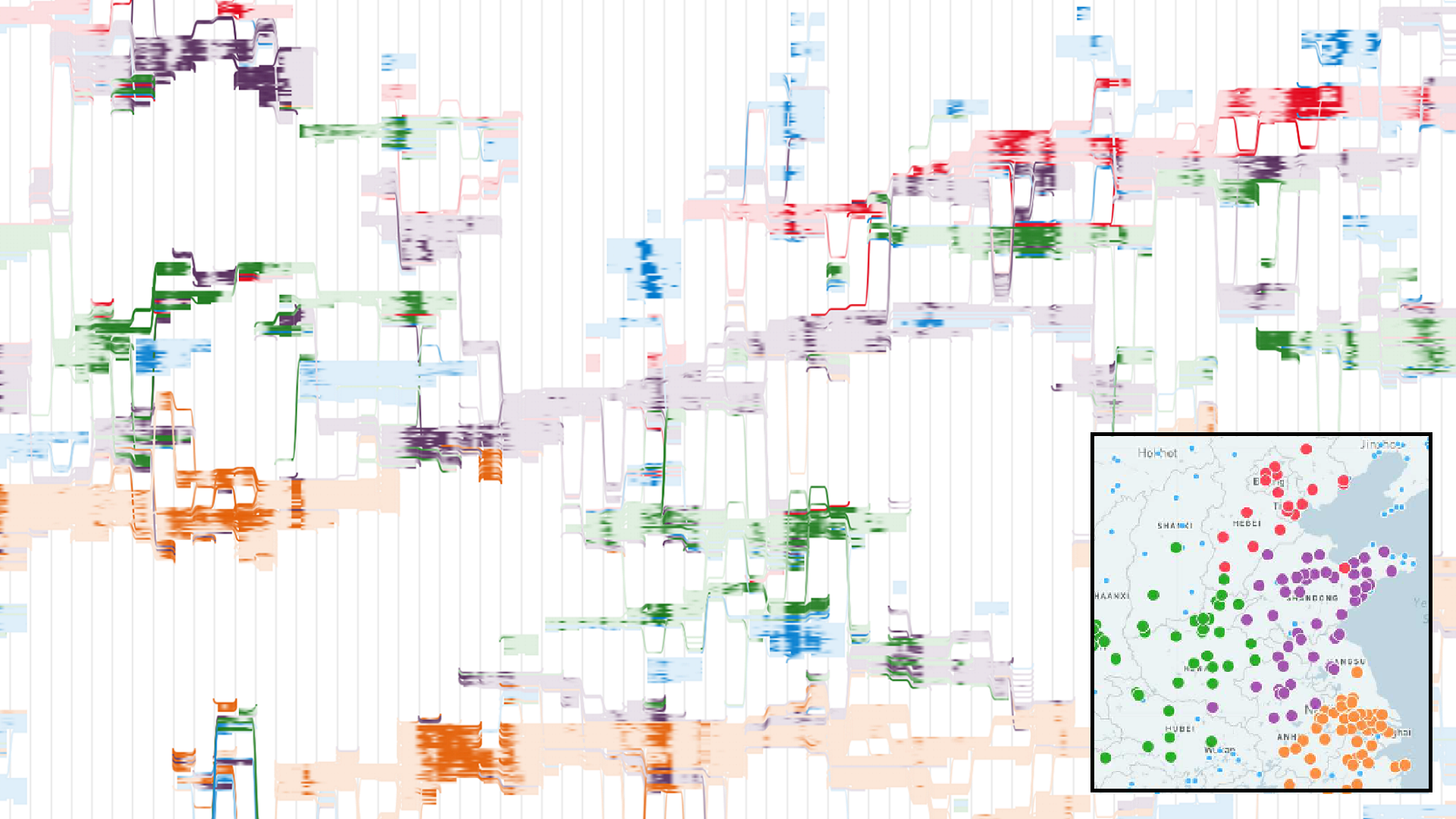Visualizing Large-Scale Spatial Time Series with GeoChron
Zikun Deng, Shifu Chen, Tobias Schreck, Dazhen Deng, Tan Tang, Mingliang Xu, Di Weng, Yingcai Wu
DOI: 10.1109/TVCG.2023.3327162
Room: 104
2023-10-26T05:45:00ZGMT-0600Change your timezone on the schedule page
2023-10-26T05:45:00Z

Fast forward
Full Video
Keywords
Spatiotemporal visualization, spatial time series, Storyline
Abstract
In geo-related fields such as urban informatics, atmospheric science, and geography, large-scale spatial time (ST) series (i.e., geo-referred time series) are collected for monitoring and understanding important spatiotemporal phenomena. ST series visualization is an effective means of understanding the data and reviewing spatiotemporal phenomena, which is a prerequisite for in-depth data analysis. However, visualizing these series is challenging due to their large scales, inherent dynamics, and spatiotemporal nature. In this study, we introduce the notion of patterns of evolution in ST series. Each evolution pattern is characterized by 1) a set of ST series that are close in space and 2) a time period when the trends of these ST series are correlated. We then leverage Storyline techniques by considering an analogy between evolution patterns and sessions, and finally design a novel visualization called GeoChron, which is capable of visualizing large-scale ST series in an evolution pattern-aware and narrative-preserving manner. GeoChron includes a mining framework to extract evolution patterns and two-level visualizations to enhance its visual scalability. We evaluate GeoChron with two case studies, an informal user study, an ablation study, parameter analysis, and running time analysis.